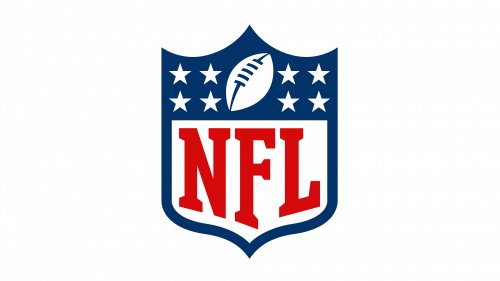When it comes to logos that instantly resonate with a wide audience, emblems adorned with stars hold a special place. Famous corporations such as Paramount, Subaru, and Heineken have used star motifs in their logos, taking advantage of their attractive properties.
One of the main benefits of using a star in a brand emblem is that it evokes universal positive associations. Stars are often associated with high standards, advanced technology, artistic creativity, and lofty goals. The inclusion of a star in an emblem can evoke thoughts of prestige, higher aspects of spirituality, the joy of discovery, and intellectual achievement.
Not limited to a single interpretation, the star concept provides a wide field for design exploration. In addition to the traditional five-pointed image, designers can experiment with different styles. These can include anthropomorphic star shapes or complex geometric variations that are eye-catching and intriguing.
It’s not just about visual appeal but also about understanding the semiotics of the star emblem, which is essential for effective branding. An in-depth analysis of the historical, cultural, and emotional impact of such a symbol can be invaluable to companies considering a star-themed logo. By mastering this foundational knowledge, the brand ensures that the star element of the logo will not only attract attention but also harmonize with the overall branding strategy and message.
Star emblems are a multifaceted approach to branding, combining aesthetic appeal with layered meaning. They can be a powerful tool for companies looking to engage audiences on multiple levels, clearly communicate their values, and stand out in an oversaturated marketplace. Careful study and understanding of the attributes, implications, and possible interpretations of star symbols in branding can greatly enhance the effectiveness of a logo.
What do logos with stars represent?
Star logos are more than just decorative elements; they are powerful tools in a brand’s visual story. Just as artists use brush strokes and writers use words, graphic designers use shapes like stars to paint a vivid picture of a company’s ethics, values, and aspirations.
The use of a star in logo design not only enhances aesthetics but also helps to connect the brand with the audience, evoking a range of emotions and connotations. Across the globe, stars have a deep significance. They often have spiritual connotations, evoking awe, aspiration, and hope.
Cultural interpretations of stars are vast and varied. In some societies, they are seen as divine symbols, beacons of hope, or even omens of prosperity. Patriotic overtones are also evident, such as in the star-spangled design of the U.S. flag, which serves as a testament to unity and national pride. The inclusion of a star in a logo can have a wide variety of implications, depending on context and intent.
For example, depicting a star with humanoid features can give the logo a whimsical twist, making the brand more approachable and fun. Conversely, a constellation of stars can point to a company’s rich heritage or emphasize its broad reach.
Despite their simplicity, stars carry deep symbolism. Their flexibility as a design element allows them to fit seamlessly into different areas of business. When used effectively, star elements can enhance a brand’s personality and make it more memorable and evocative in the eyes of the audience. Star motifs in logo design act as bridges that connect the brand to the audience through shared cultural, emotional, and symbolic representations.
The different types of star logo
Brands use various design elements to convey their story, and star-themed logos become a powerful tool in this narrative journey. Just as an author creates a story using complex words and phrases, a graphic designer creates a tale using a harmonious combination of colors, fonts, and symbols.
Among these symbols, the star stands out as a beacon of significance. Beyond its visual appeal, it establishes a deep connection, tying the brand to many feelings and ideas. Across continents and cultures, stars are revered and recognized, often symbolizing spiritual aspects, evoking feelings of elation and the pinnacle of accomplishment.
Different cultural traditions give stars multifaceted meanings. In some traditions, they are seen as divine signs pointing the way, in others as the embodiment of good fortune and favor. Undeniable and their patriotic resonance, an example of which is the presence of stars on the flag of the United States, symbolizing unity and common values.
The application and interpretation of the star in logo design can be very diverse, which is determined by its image and context. For example, a star characterized by human qualities can give the brand a sense of joy, making it bright and young. On the other hand, multiple stars can hint at a company’s heritage or its ambition to reach the zenith in its field.
It is said that simplicity is the height of sophistication. In their elemental form, stars may seem uncomplicated, but their symbolic depth is immense. Their adaptability as design components is noteworthy, making them a suitable choice for a variety of industries and contexts. If used with intentionality and understanding, the star motif can elevate a brand’s image, deeply anchoring it in the minds of the audience. In the grand tapestry of corporate design, stars act as core threads, weaving the essence of the brand with universal symbols and sentiments.
Star logos are characterized by a variety of designs. Among them, we can distinguish several quintessential styles found in the emblems of famous brands:
The five-pointed star
The five-pointed star is an iconic symbol with a rich history that is often found around the world in a variety of contexts. This geometric ornament can be seen on national flags and spiritual gatherings, highlighting its universal appeal and recognizability. Therefore, it is not surprising that when looking for a symbol that will immediately resonate with different audiences, organizations often use the five-pointed star.
This star shape carries connotations of balance, unity, and harmony. The equally spaced points and symmetrical appearance of the star symbolize balance, making it an auspicious emblem for organizations seeking to convey stability and reliability. For centuries, cultures and societies have embraced the five-pointed star for its meaningful symbolism and aesthetic appeal.
Instant recognizability of an emblem is essential in branding, and few symbols achieve this as effectively as the five-pointed star. Its adaptability to different corporate and spiritual contexts makes it a versatile design option. When an organization chooses such a time-honored symbol, it appeals to the collective consciousness, building on the universal acceptance and trust in this star shape.
With its rich history and wide range of possibilities, the five-pointed star is an attractive option for those looking to create a memorable and influential corporate identity. Its continued presence in various spheres demonstrates its powerful appeal and the depth of meaning it can convey.
Complex stars
Stars with complex designs are often made up of multiple dots and individual elements, which sets them apart from more traditional star images. Many take inspiration from radiant solar flares, while some take it to a modern, abstract level. For example, the Mercedes car emblem is often labeled as a star. However, its design differs from the usual idea of a star shape, challenging traditional notions and pushing the limits of what a star can represent in the language of design.
The beauty of such intricate star designs lies in their ability to push the boundaries of typical symbolism. Such stars, by going beyond standard schemes, are often indicative of innovation, creativity, and forward thinking. Brands and organizations that choose such unconventional star shapes are seeking to stand out and make a statement in an oversaturated marketplace.
These multifaceted star images enrich the visual lexicon reminiscent of radiant solar flares or abstract shapes. They offer a new take on a symbol that has been revered for millennia, proving that even the most timeless symbols can be reinterpreted for a modern audience. These designs are eye-catching and make you think more deeply about the evolution of symbols and their meanings in today’s world.
Negative space star logos
Negative space in logo designs plays a key role in emphasizing and giving depth to the emblem. This design technique allows for the clever use of space around and between image objects, resulting in innovative and often unexpected visuals. The use of such space allows designers to insert additional motifs or icons without cluttering the overall look.
Proper use of negative space not only adds aesthetic appeal but also helps to engage viewers. When viewers notice these subtle design elements, they are often encouraged to look more closely and longer, deciphering the hidden images and messages. This prolonged interaction can make a lasting impression and create a deeper connection between the viewer and the brand.
The negative space of a logo may depict a figure or object related to a company’s industry or ethics. Such hidden imagery can become a talking point, generate discussion, and make the logo memorable. It subtly conveys a company’s attention to detail, creativity, and innovative approach, setting it apart in a market rife with simpler designs.
Anthropomorphic stars
When visualized, the five-pointed star can easily be likened to a human figure, with each point representing a part of the human body: the topmost is the head, the sides are the arms, and the bottom two are the legs. Such anthropomorphic representation gives the image some familiarity and relatedness. The image of the humanoid star is a unique combination of simplicity and creativity, which often resonates with viewers due to its universal symbolism.
This design can be particularly appealing to companies targeting a youthful audience. The playful and lively nature of anthropomorphic design evokes a sense of wonder, whimsy, and imagination – elements that are often associated with youth. In addition, these designs easily convey the emotions, ideas, and characteristics that the brand wants to convey, making them versatile for communicating information.
An anthropomorphic star can be depicted jumping for joy or holding a product, showing enthusiasm, approval, or delight. On the other hand, a star with its arms down may symbolize frustration or the need for reinforcement, perhaps hinting at a solution the brand is offering.
The dynamism of this design allows brands to tell a story or drive a narrative without the use of words. This ability to tell a story can make a brand more memorable and easily understood, especially for younger audiences who appreciate visuals and narratives.
Accent stars
Stars, while powerful symbols in their own right, can also act as subtle branding enhancers. They can be seamlessly incorporated into various design elements, such as surrounding emblems, complementing word marks, or emphasizing other key visual elements. The beauty of using stars as secondary elements lies in their subtlety: they do not overwhelm the main design but rather enhance its overall appeal.
Including stars as secondary elements can give a logo a touch of distinction or sparkle. The addition of stars can be aesthetic and symbolic, whether it’s a small star dotting the brand name or a cluster of stars around the emblem. Stars, even if they are not the centerpiece of a logo, can indicate quality, excellence, or special character.
Using stars as additional elements can be particularly useful for brands that want to convey certain values or aspirations without making them too overt. This allows for a balanced design where the core message is clear, but the star offers a subliminal message of aspiration, quality, or excellence.
This subtle use of stars also provides branding flexibility. Depending on ongoing campaigns or brand updates, the emphasis on the star can be increased or decreased, giving brands the ability to evolve and adapt their message over time. While stars are powerful symbols when they are pronounced, their subtle inclusion as design accents can be just as impactful, providing depth, nuance, and versatility to a brand’s image.
Which brands have a star logo? Famous star logo
The ubiquitous use of star motifs in modern branding is a testament to their universal appeal and adaptability. One of the distinctive features of using a star in design is the lack of association with any industry. This makes it an extremely versatile element, suitable for a wide variety of fields of activity.
Star motifs are common in a wide variety of industries, from fashion to automotive design to technology. Because stars are not limited to a specific niche, they provide an opportunity for creativity and differentiation in various business areas. Many fashion brands use stars to denote elegance or quality, while in the technology sector, stars can denote innovation and forward thinking.
This widespread use of star elements in logo design is a testament to their ability to convey universal positive qualities. A star can serve to convey excellence, aspiration, or quality. It allows brands to convey a powerful message without being overly specific or restrictive in their imagery.
The adaptability of the star motif is not limited to industry. The design can be modified in a variety of ways, such as the number of dots on the star, the use of negative space, or integration with other design elements. This flexibility opens up limitless possibilities for brand differentiation and message creation.
Aardman
Originally known as Aardman Animations or Aardman Studios, Aardman has carved out a unique niche in visual storytelling. Known as an innovator in stop-motion animation and clay animation, this company has brought iconic characters such as Morph, Wallace, and Gromit to life.
Star symbols are often used in branding to signify excellence, quality, and uniqueness, and the Aardman logo is in keeping with this tradition. Over the course of the company’s existence, the emblem has undergone several transformations, and the star motif has become a permanent visual element. In the latest version, the emblem is a compact but eye-catching five-pointed star above the letter “A” of the word mark.
This design choice gives the emblem a modern look while maintaining a sense of sophistication. It is in keeping with modern perceptions and serves as a tacit promise of the creative quality that viewers can expect from Aardman. This small but significant element reinforces the brand’s image, cementing its reputation for innovation and quality in a crowded marketplace.
The inclusion of a star in the logo seems almost counter-intuitive for a company like Aardman, given its commitment to pushing boundaries in animation techniques and storytelling. The star is a subtle yet expressive visual indicator of the brand’s position in animation and beyond.
Benelli
The logo of Benelli, a world-renowned motorcycle company, is rich in symbolism and tradition. Based in Italy, the company’s logo pays homage to its roots by using the colors of the Italian flag, which emphasizes its cultural and geographical origins.
The logo is characterized by intricacy and uses various elements to convey its message. Prominent among them is the lion, symbolizing courage and strength. Around the lion is a laurel wreath, an ancient symbol often associated with victory and honor, further emphasizing the brand’s superiority and heritage.
The emblem also features a metal background reminiscent of a badge, lending formality and prestige to the design. One of the most intriguing elements of the emblem is the trio of stars. These five-pointed stars are not just an aesthetic choice but an integral part of the brand’s identity. Each star indicates the company’s unwavering commitment to excellence, brilliance, and high-quality motorcycle craftsmanship.
Carl’s Jr
Founded in 1941, Carl’s Jr. has since become a leading fast-food restaurant chain in the United States and around the world. Its logo plays a key role in shaping its unique corporate identity.
The Carl’s Jr. logo is based on an anthropomorphic star with a delightful smile. The smiling star is not just an emblem but a symbol that reflects the brand’s commitment to customer satisfaction and the joy of every meal.
The warm hues enveloping the logo exude warmth and friendliness. Combined with the smiling star, this creates a sense of hospitality, allowing visitors to immediately feel a connection with the brand. The font, reminiscent of handwritten notes, reinforces this personalized approach, making shoppers feel they are globally connected and in a place that values personalized experiences and interaction.
Converse
The Converse logo is known in the footwear industry for its striking and iconic design and stands out through its use of a star-shaped emblem. This emblem, while simple in design, is of great importance to the brand’s identity.
The use of the five-pointed star in the Converse badge is not just a design element but a symbol of the brand’s commitment to the highest quality and exceptional craftsmanship. This design subtly conveys the brand’s ethos of constantly evolving, improving, and striving to push boundaries.
While the star and arrow elements carry deep meaning, the Converse word mark is not left out. With bold and straightforward typography, the brand exudes both confidence and accessibility. This balance allows Converse to position itself as a cutting-edge and innovative brand while remaining easily recognizable and appealing to a wide variety of consumers.
Dallas Cowboys
In professional sports, star-shaped emblems have a special significance, often symbolizing ideals such as excellence, success, and high performance. One such iconic example is the emblem of the Dallas Cowboys, a professional soccer team that is widely renowned in the United States.
The Dallas Cowboys emblem consists primarily of a star, making it one of the simplest yet most memorable symbols of professional sports. The star is often used without text and represents the team’s brand on its own. The blue and white color scheme of the emblem further emphasizes its simplicity and adds to its sophistication.
The minimalist approach to creating the emblem serves several functions. On the one hand, it provides easy recognizability; on the other hand, it emphasizes the team’s desire for perfection and high standards. The lack of complex graphics and text makes the emblem very versatile and easily adaptable for a variety of purposes, from team paraphernalia to digital platforms.
DC Shoes
DC Shoes has carved out a niche for itself in the alternative sportswear industry, gaining recognition primarily among skateboarders and fans of similar sports. A characteristic feature of the brand is its emblem, which is characterized by minimalism and monochrome design.
The emblem is a monogram in which the letters “D” and “C” are organically intertwined and resemble links of a chain. This interconnection symbolizes the unity, strength, and interconnection of the brand with the target audience. The compactness of the design allows it to remain memorable and, at the same time, adaptable to different platforms and products.
The distinctive element of the emblem is the six-pointed star located in the negative space formed by the curve of the letter “C.” The difference in design from the five-pointed stars commonly used in other logos distinguishes DC Shoes. The six-pointed star is indicative of the brand’s unique approach and its focus on an audience that values individuality and alternative styles.
Energy Star
Star-shaped logos often symbolize excellence, ambition, and quality, making them popular in many industries. In the US, one such emblem is the Energy Star logo, owned by the US government.
A product with the Energy Star emblem is an endorsement of energy efficiency and environmental friendliness. It is a concise designation that a product meets or exceeds certain environmental standards. This makes it easier for people to choose products that match their values of energy conservation and environmental responsibility.
The Energy Star logo design offers an original approach to using the shape of a star. Instead of writing the full name of the organization, the designers replaced the term “star” with a graphic image of a five-pointed star. This star is instantly recognizable and has universal appeal, making it an effective way to communicate the brand message without using text alone.
The thoughtful replacement of the word with a commonly understood symbol simplifies the visual presentation and adds a layer of instant recognition and credibility. This enhances the impact of the logo and helps it stand out in a marketplace that is increasingly focused on energy efficiency.
Estrella
Originating from Spain, Estrella is a trusted pillar in the world of beer. Rooted deep in history, the brand has expanded its presence and is now recognized by connoisseurs and beer lovers around the world.
At a glance, the Estrella logo is a tapestry of dynamic elements. It is centered on a banner with a certain slant that creates the illusion of movement, reminiscent of a flag fluttering in a light wind.
The central place in the emblem is occupied by a star, but not just any star. Executed with unique craftsmanship, it radiates character, almost personifying self-confidence. Her curved arms assume a triumphant pose as if celebrating the brewery’s long heritage. One might even realize that she extends her arms, personifying warmth, like a cheerful person welcoming friends into a hug.
Heineken
Heineken is a world-renowned brand of beer, recognized around the world for its distinct taste and iconic logo with a bright red star. Since 1873, Heineken’s reputation has grown considerably to become one of the leading beer producers in the world.
While the main appealing feature of the Heineken logo is its bright green wordmark, the inclusion of a red star certainly helps to increase brand recognition. This particular star has been firmly embedded in the company’s brand identity since the 1800s, although its hue has sometimes changed.
The star’s presence in the logo is iconic, representing Heineken’s ambition and unwavering commitment to excellence in the brewing industry. The combination of the bright green word mark and red star creates a visual identity, making the logo instantly recognizable in any setting. This unique combination ensures brand memorability and reflects Heineken’s enduring heritage of quality and excellence. Over the decades, the logo has become more than just a representation of a beer brand but the embodiment of a rich history.
Macy’s
Macy’s, an iconic retailer that has been around since 1858, has undergone many brand transformations, but the star remains a key element of its visual identity. The brand’s emblem is world-renowned, and the two distinct star symbols reinforce the message it is meant to convey.
What initially catches the eye in the Macy’s emblem is the five-pointed red star to the left of the word mark. The color red is often associated with the energy and passion that Macy’s seeks to embody in its customer experience and products offered.
Typically, Macy’s places an apostrophe between the letters “Y” and “S.” The brand departs from tradition by replacing the apostrophe with a smaller asterisk. This innovative punctuation choice is far from trivial: it emphasizes the brand’s attention to detail and adds an extra level of symbolism. It is a subtle yet powerful reminder of the brand’s unwavering focus on quality.
Together, the two stars create a harmonious balance in the emblem. While the larger star represents the brand’s grand vision and bold approach, the smaller star signifies the meticulous attention to detail that has made Macy’s known around the world.
NFL
Since its inception in 1920, the NFL, or “National Football League,” has become synonymous with professional American soccer, with 32 teams. Its emblem is a testament to the league’s heritage and is instantly recognizable to sports fans around the world.
The deep patriotism embedded in the NFL emblem cannot be overlooked. The shield, which is the dominant element, symbolizes resilience, skill, and the enduring spirit of the game. This emblematic shield is adorned with the quintessential American colors of red, white, and blue, highlighting the league’s deep connection to American culture and values.
The inclusion of four stars in the emblem is by no means an arbitrary choice. These stars serve as a beacon reflecting the exceptional caliber, dedication, and professionalism of the athletes who compete in the league. Each star can be taken as an indication of the relentless pursuit of excellence, dedication to the sport, and unrivaled talent that the NFL showcases.
Paramount
Star motifs are associated with the concepts of fame, achievement, and aspiration. Paramount’s world-renowned mark demonstrates the power of this symbol, even when used as an additional design element. Although the central image of this emblem is a towering mountain, the stars surrounding it are by no means secondary. They fill the emblem with a sense of grandeur and distinction.
The 24 five-pointed stars framing the mountain in the Paramount logo were of great significance. Each star symbolized one of the 24 prominent actors and actresses who originally worked with the studio. This design choice wasn’t just aesthetic; it reflected the company’s vision and its connection to celebrities in the entertainment industry.
As design evolved and brands sought more modern and streamlined visuals, Paramount made a strategic decision to simplify its logo. The company took a more minimalistic and modern approach by reducing the number of stars. However, this did not result in a weakening of the stars’ symbolism. The refined design continues to convey notions of fame, aspiration, and cinematic excellence.
Pontiac
The Pontiac emblem is another prime example of the use of celebrity imagery in automotive branding. Founded in 1926, Pontiac has a long history of distributing high-performance automobiles, primarily in the United States. While the pace of Pontiac vehicle production may have slowed in recent times, the brand continues to be a prominent presence in the automotive sector.
The Pontiac logo is a marvelous combination of form and meaning, being an arrow-shaped design in red and silver hues. These colors are specifically chosen to symbolize qualities such as passion, strength, and excellence. These qualities echo the brand’s core values.
The logo is topped with a four-pointed star, which is different from the usual five-pointed stars often found in logo designs. This atypical star plays an important role in giving the logo, and by extension, the brand itself, an extra level of distinction. The use of this star is not only a design element but also an attempt to distinguish Pontiac as a formidable player in the automotive industry.
In this context, the star becomes not just a design embellishment but a focal point that draws attention to the brand’s identity and commitment to excellence. It complements the shape of the arrowhead, further enriching the brand image that speaks of history, performance, and outstanding qualities.
Rockstar Games
Known for its groundbreaking video games, the emblem of Rockstar Games incorporates a star motif. Founded in 1998, the company operates under the umbrella of Take-Two Interactive.
With its simple yet striking design, the Rockstar Games emblem resonates with young people. It is a masterclass in minimalism, utilizing the full power of a single symbol and iconic shape. The dominant letter “R” blends seamlessly with the star to create an instant visual reminder of the company name and evoke notions of celebrity, success, and dynamism.
The choice of yellow as the primary color for the Rockstar logo is no accident. In addition to its aesthetic appeal, yellow traditionally conveys optimism, cheerfulness, and enthusiasm. This bright color is a beacon that attracts attention and imbues the brand with joy and enthusiasm.
Pellegrino
- Pellegrino, often referred to as “San Pellegrino,” is a beacon of luxury in the bottled water industry. This brand, originally from Italy, dates back to the 19th century and has earned a reputation for meeting the refined tastes of discerning consumers around the world.
The emblem of S. Pellegrino is a study of simplicity combined with purposeful design. The emblem is dominated by a shining five-pointed red star enclosed in a white circle with a red border. More than just an aesthetic choice, this star symbolizes the brand’s unwavering commitment to innovation, purity, and creativity. The bright red hue, in turn, reflects the passion, quality, and unique essence of the Italian spirit.
The star is accompanied by a carefully selected serif typeface in which the brand name is written. This font, with its classic and elegant lines, reinforces the image of sophistication and timeless appeal that S. Pellegrino strives to create. Pellegrino.
Star+
Star+ is one of the most notable additions to the streaming services backed by the esteemed Disney Media and Entertainment company. Launched in 2021, it has quickly gained a Latino audience thanks to its rich collection of movies and TV shows gathered from various libraries.
The brand name “Star” itself suggests that the emblem will be star-centric. Instead of adding a star symbol, the brand introduced it into the name itself by replacing the letter “A” in the uppercase wordmark with a bright multicolored star.
This original design solution distinguishes the logo and emphasizes the brand’s commitment to thinking outside the box. It shows that Star+ is not just another streaming platform.
The use of bright colors in the star signifies versatility, hinting at a variety of content to suit a wide range of tastes and preferences. Moreover, the inventive design strategy reinforces the brand’s positioning in the ever-evolving entertainment industry, reaffirming its commitment to being a leader in creativity and innovation.
Starbucks
The Starbucks logo is an intriguing emblem that does not evoke direct associations with coffee or soft drinks. At the center of the design is the Siren, a mythological figure from maritime legends often associated with enchantment and seduction. The emblem serves as a symbolic embodiment of the charm that the brand wants to convey, especially in its coffee offerings.
The pinnacle of this captivating image is a subtle yet spectacular element: the star. This celestial symbol, not immediately obvious, is part of the crown adorning Siren’s head. Far from being a random detail, the star is an essential element that emphasizes the brand’s commitment to perfection.
Despite its modest place in the overall design, the star emphasizes the importance and authority of the brand, cementing its reputation as a leading force in the coffee industry.
Subaru
Star motifs in logos transcend industries, and the automotive sector is no exception. A prime example of this is the famous Japanese automaker Subaru. Recognized worldwide, the Subaru emblem is a testament to the company’s prominence in the automotive world.
Originating in Japan, Subaru has secured its place among the world’s leading automakers. An important factor in this position is the symbolic and meaningful emblem of the company. The emblem, adorned with six four-pointed stars, is not just a design choice. It draws inspiration from outer space, specifically the constellation of Taurus. In Japanese, “Subaru” translates to “constellation,” further emphasizing the brand’s deep connection to its heritage.
The symbolism expands when one delves into the placement and size of the stars. The dominant star on the emblem symbolizes the parent company, being the anchor and central figure. Around it are five smaller stars, each symbolizing one of the brand’s subsidiaries. This design encapsulates the essence of a conglomerate, with the parent company at the center, supported by the subsidiaries.
The Subaru logo is not just a design but a story. It reflects the brand’s origins, its corporate structure, and its connection to the universe while being a recognizable emblem in a vibrant automotive marketplace.
Texaco
Founded in 1902 as the Texas Company, Texaco is a well-known American oil brand, now part of the Chevron Corporation. The brand fuels a huge number of vehicles across the United States, and its operations extend to various countries around the world.
Emblems utilizing a star design convey confidence, and the Texaco emblem is no exception. The emblem’s pronounced yet simplistic design speaks of reliability and the brand’s desire to maintain high quality. Such logos have a quiet yet sonorous voice, indicating that beneath their simplicity lies a promise of stability and high standards.
A distinctive feature of Texaco’s star logo is the inclusion of the letter “T” in its design. This subtle addition improves the memorability of the brand, allowing it to be instantly recognizable without an accompanying name. This design choice emphasizes the company’s heritage and helps position the brand in the marketplace.
Learning from company logos with stars
Star emblems, as numerous examples of famous brands in various industries show, demonstrate their universal appeal and versatility. Instantly recognizable and deeply rooted in cultural memory, these symbols evoke feelings of aspiration, quality, and leadership. Their connotations extend beyond celestial bodies, often hinting at excellence, achievement, and innovation.
Inextricably linked to ideals such as fame, success, and brilliance, these figures have long been utilized in a variety of business settings. They serve as visual markers that reflect a company’s desire to shine brightly in its field and signal its commitment to offering the highest level of service or products.
The versatility of the star symbolism makes it most appropriate for brands aiming for global resonance. Despite the simplicity of their design, their meaning can be very profound. Their presence in an emblem can give it an aura of reliability, purpose, and creativity, laying a solid foundation of trust and recognizability among the target audience.
For companies considering using star motifs in their branding, it’s important to align the design with the overall message and values of the brand. The shape, size, color, and placement of the star in the logo should be in harmony with the company’s ethics and vision. It is very important to think through the desired brand image and the emotions it should evoke in the audience. An experienced branding expert can be of invaluable help in this endeavor. They will tell you how best to use the power of star symbols so that the logo not only stands out but also reflects the essence of the organization.
The enduring appeal of star logos lies in their ability to effortlessly convey a multitude of positive qualities. When used correctly, they can enhance brand perception, cement a brand’s place in a competitive market, and form a strong connection with the audience.






















